The Kodak Gift Case
Eastman Kodak Company
| Name: | Kodak Gift Case with f/8 Anastigmat Vest Pocket Kodak camera |
| Manufacturer: | Eastman Kodak Company |
| Country of Origin: | USA |
| Construction: | The Gift Case itself is of wood with a deep blue covering and lined with blue silk. It contains a brown leather camera case to hold the Vest Pocket Kodak camera; the case is lined with matching brown satin. There is a pocket built into the box to house the instruction booklet. The camera itself is a non-autographic Vest Pocket Kodak pattern. |
| Production Period: | 1913-14 |
| Model / Variant: | Non-autographic VPK with f/8 Anastigmat lens |
| Plate / Film Size: | 127 rollfilm |
| Lens: | f/8 Anastigmat |
| Shutter: | Ball Bearing No 0 |
| Movements: | None |
| Dimensions of case (w x h x l): | 8.7 x 14 x 5.5 cm (closed) |
| Date of this Example: | c1914 |
| Serial Number: | Serial 12337-S |
| Availability: |
|
| Inventory Number: | 675 |
Description
The Kodak Gift Case was introduced in October 1913 (the date on the inside of the instruction booklet) in time for the Christmas season, and the variant of the Vest Pocket Kodak camera equiped with the f/8 Anastigmat lens was initially introduced for sale as part of this outfit. The Kodak Gift Case is only featured in the 1914 EKC catalogue and was discontinued at the end of that same year. According to McKeown, only 5000 Gift Cases were produced. The VPK with the f/8 Anastigmat lens was sold separately from sometime in 1914. in the 1914 catalogue the Gift Case is listed at a price of $15, while the f/8 version of the camera alone is listed at a retail price of $12. By contrast the basic version of the VPK with the meniscus lens is listed at $6.
The image below shows a typical advert for the Kodak Gift Case, this one taken from a Saturday Evening Post published in 1913.
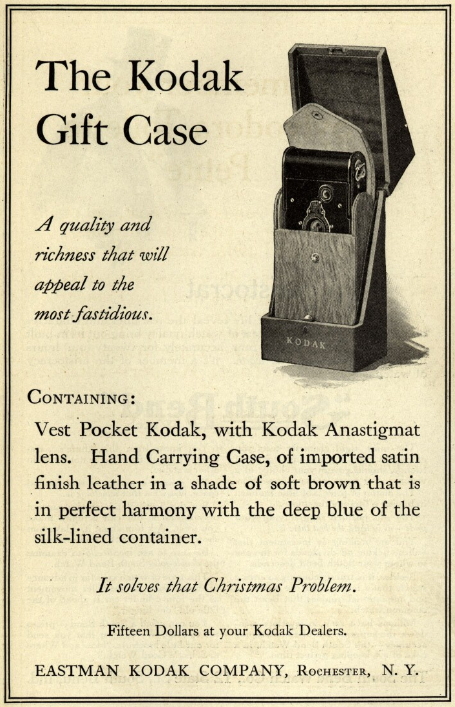
The Gift Case container is made of wood with a deep blue covering, and has a blue silk lining. The Kodak name is picked out in gold lettering below the push button that operates the closure for the hinged flap lid.
It is quite difficult to reproduce the set up depitcted in the advert as the strong lether of the case pushed it forward. It shows that there is a degree of artistic license in the production of the line drawiong used for the advertisement!
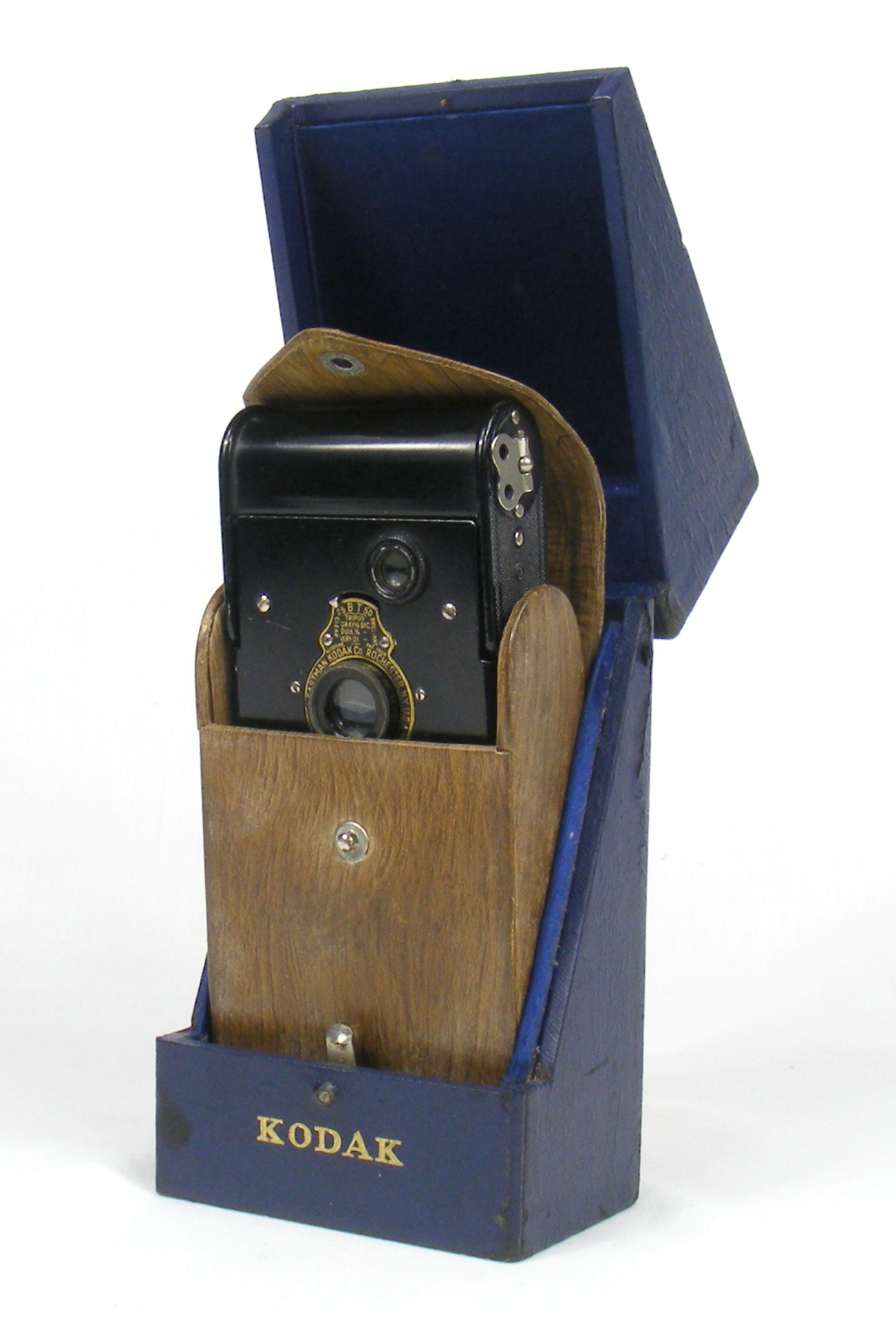
The container has a pocket built within it to house the instruction booklet, and is sized to comfortably fit the luxurious brown leather and satin lined camera case.
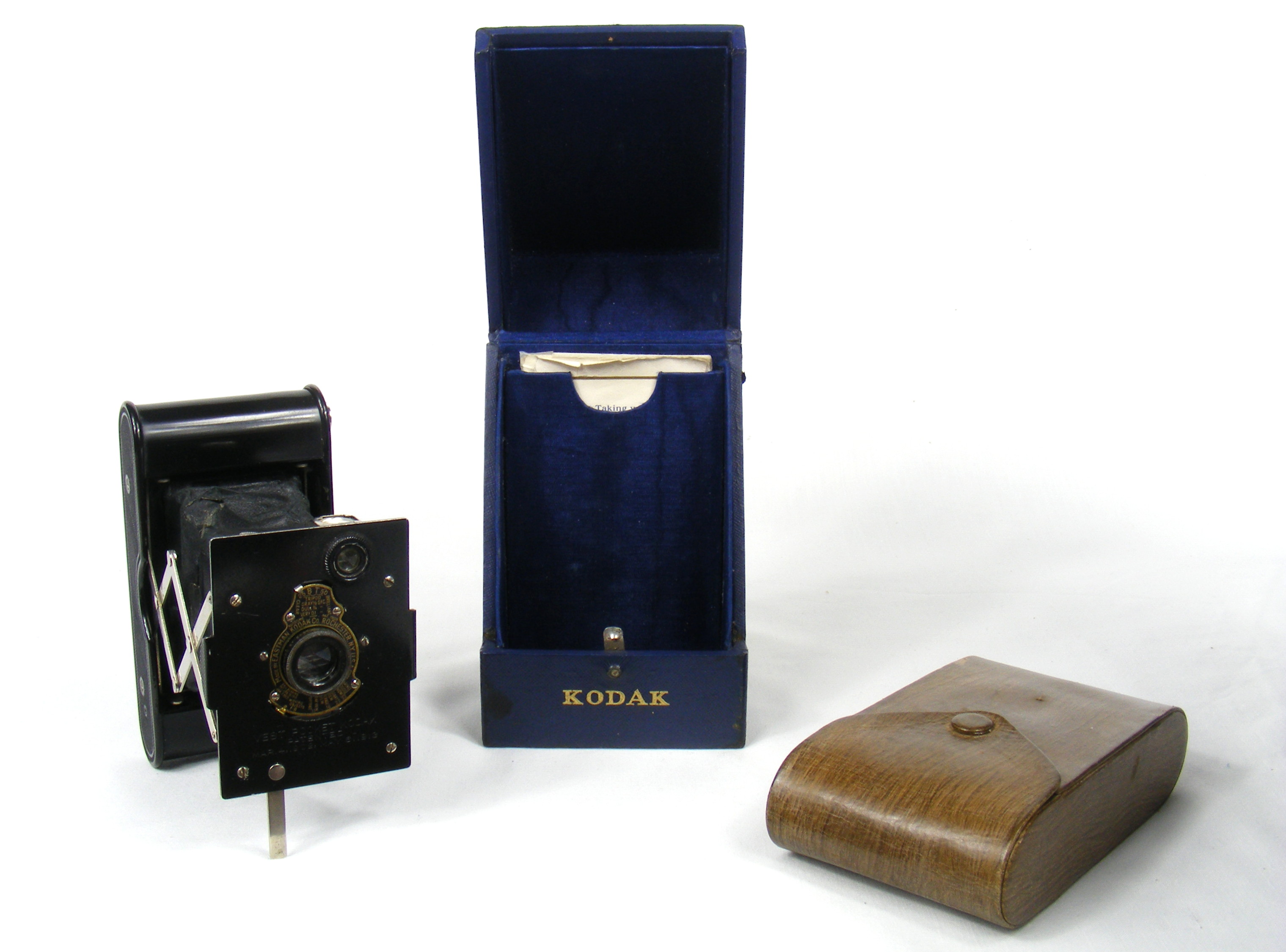
The Vest Pocket Kodak camera included with the outfit is finished in black enamel and carries a latest patent date of May 6, 1913. The black enamel finish example is in very good condition and shows few signs of wear. However the original black chamfered bellows are worn and no longer lightproof.
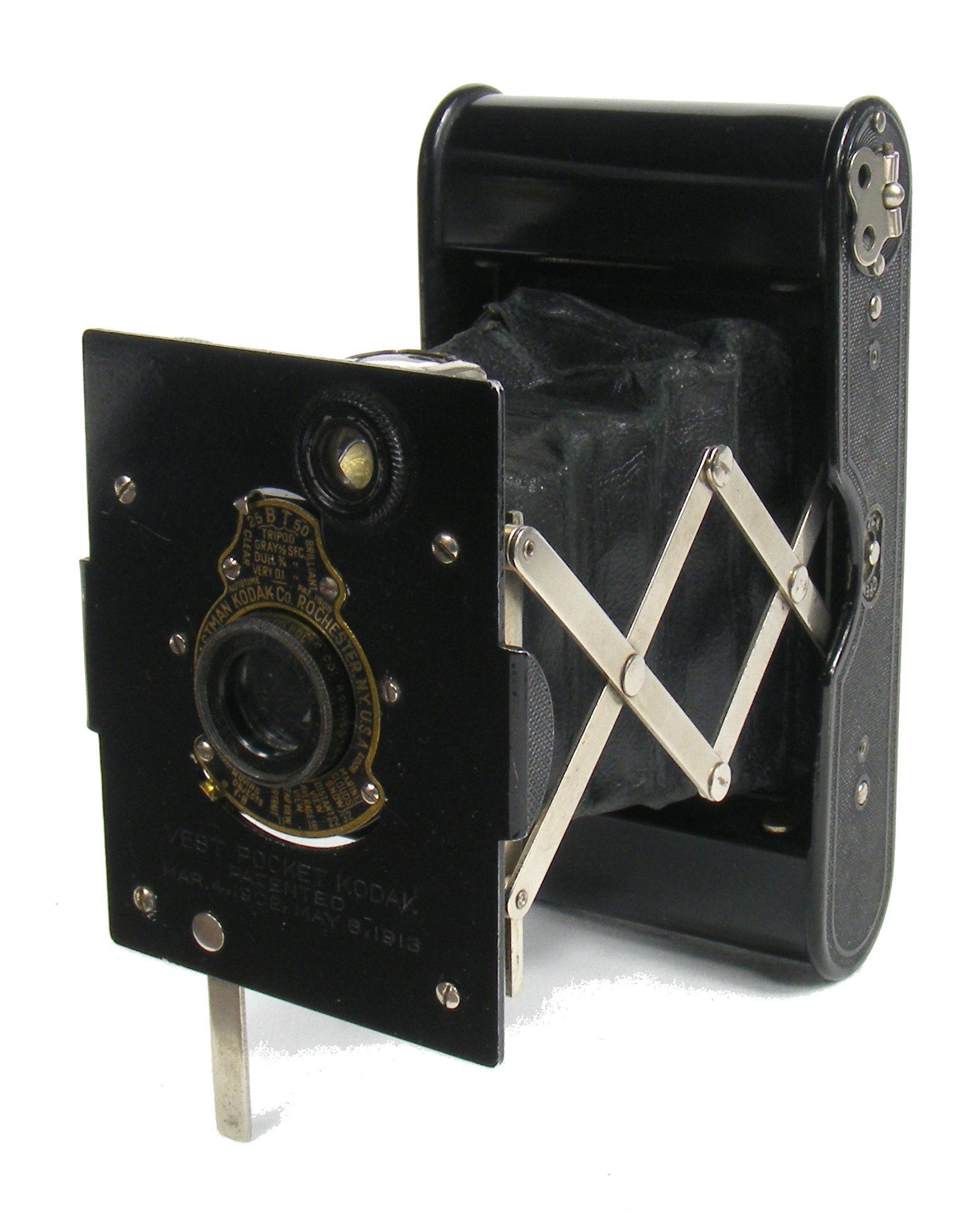
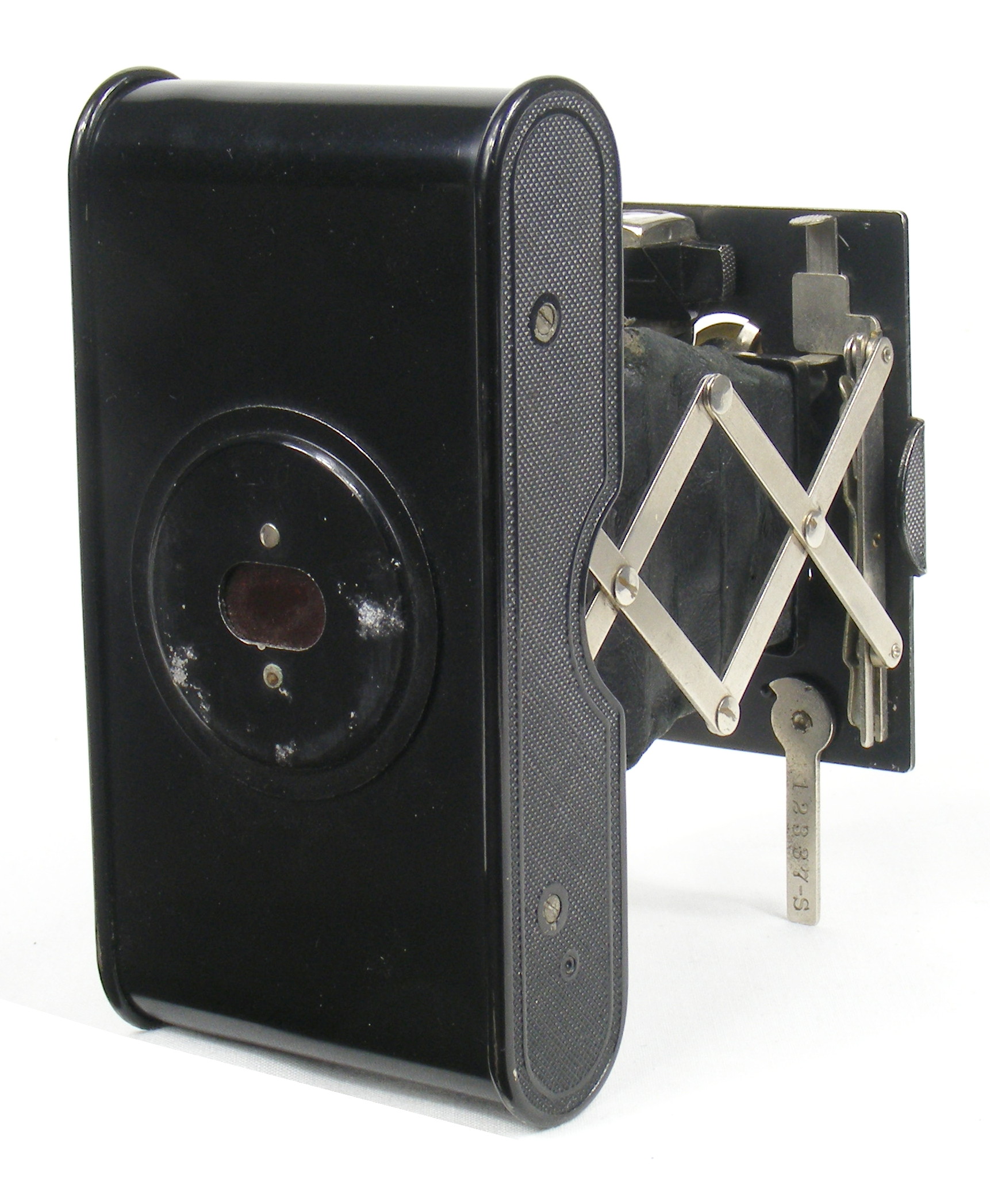
The serial number sequence for the VPK equipped with the f/8 lens started at 10001-S. The serial number of this camera is 12337-S.
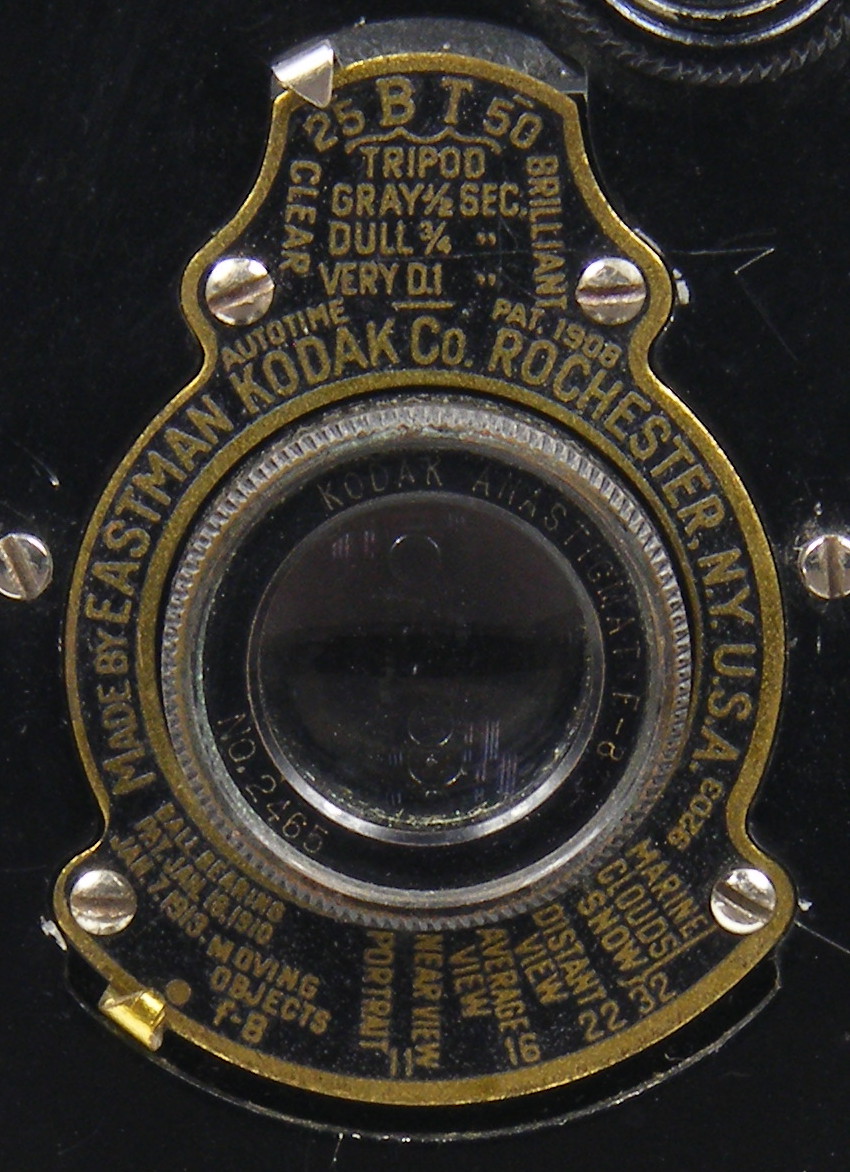 |
Note that there is a dot just to the left of the "f.8" marking to signify the f stop. Later cameras fitted with this lens do not have this dot. Jay Kay differentiates between these two patterns in his book [12], categorising them as S-03 and S-03a respectively, so the camera included with the Gift Case outfit with its early serial number is of the S-03 pattern. The other example of this VPK variant that I have in my collection is serial number 26081-S (refer to the page for the Vest Pocket Kodak Camera (Non Autographic)), and is of the S-03a pattern (no dot). |
 |
|
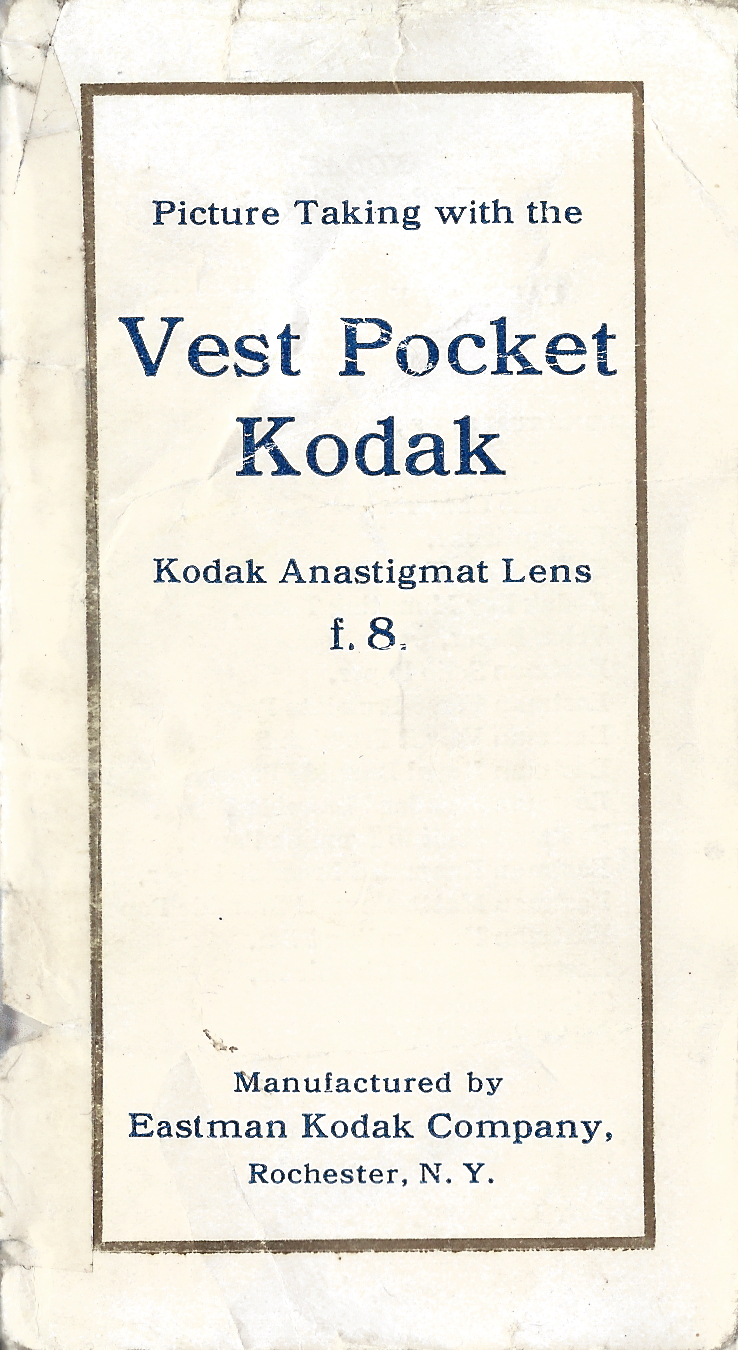 |
The instruction booklet included with the Kodak Gift Case is also unusual as the front cover has blue text rather than the usual black, with a gold outline frame, thus matching the bold colours used for the Gift Case itself. The remainder of the instruction booklet appears to be the same as that used for other Vest Pocket Kodaks from this era. |
 |
Notes
The Kodak Gift Case is very hard to find; in over 20 years of collecting I have not seen another come up for sale. I was lucky enough to purchase this outfit in the UK from a collector who had bought it in 2012 from a camera collector based in New York who had owned it since the 1950's. He in turn had bought it from an estate sale in New York and was told at the time that the original owner had worked for Eastman Kodak at launch in 1913, although there is no documentary evidence for this.
![[ ]](../../images/unchecked.png)
![[x]](../../images/checked.png)